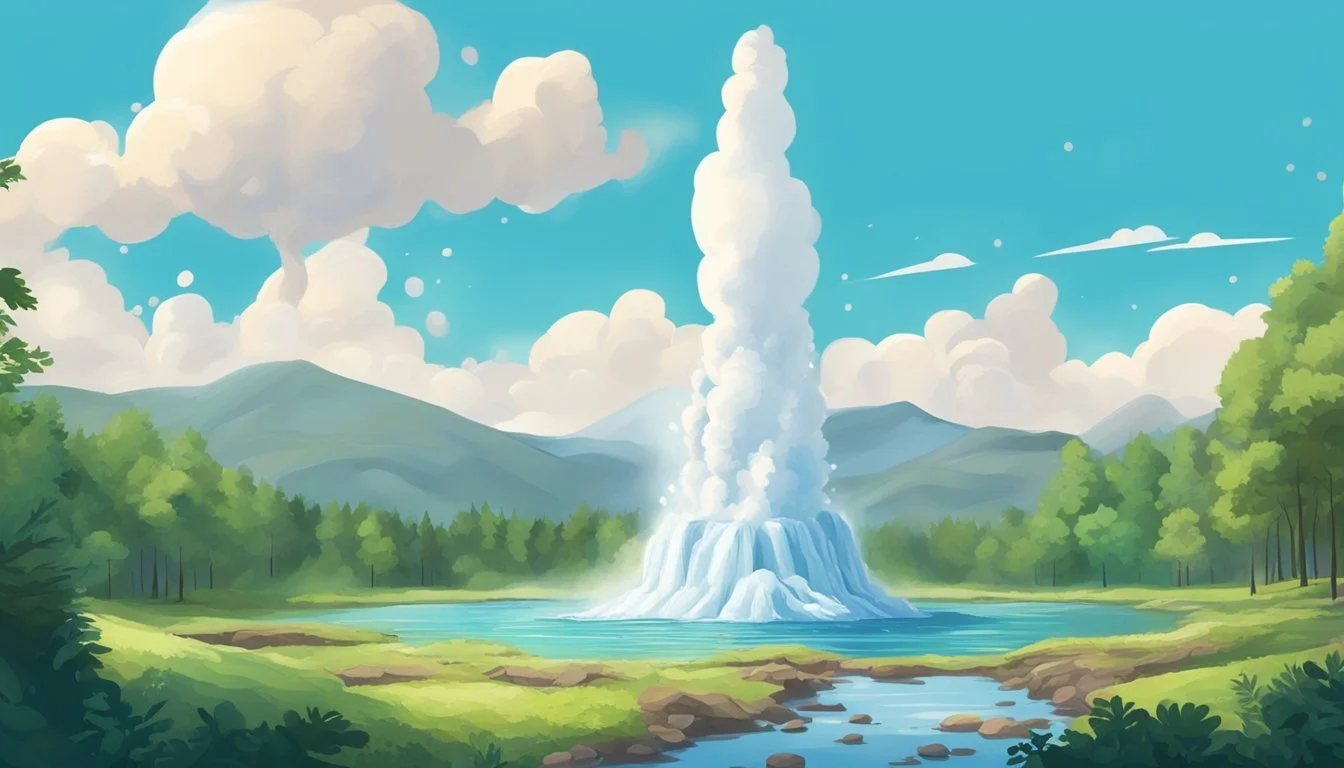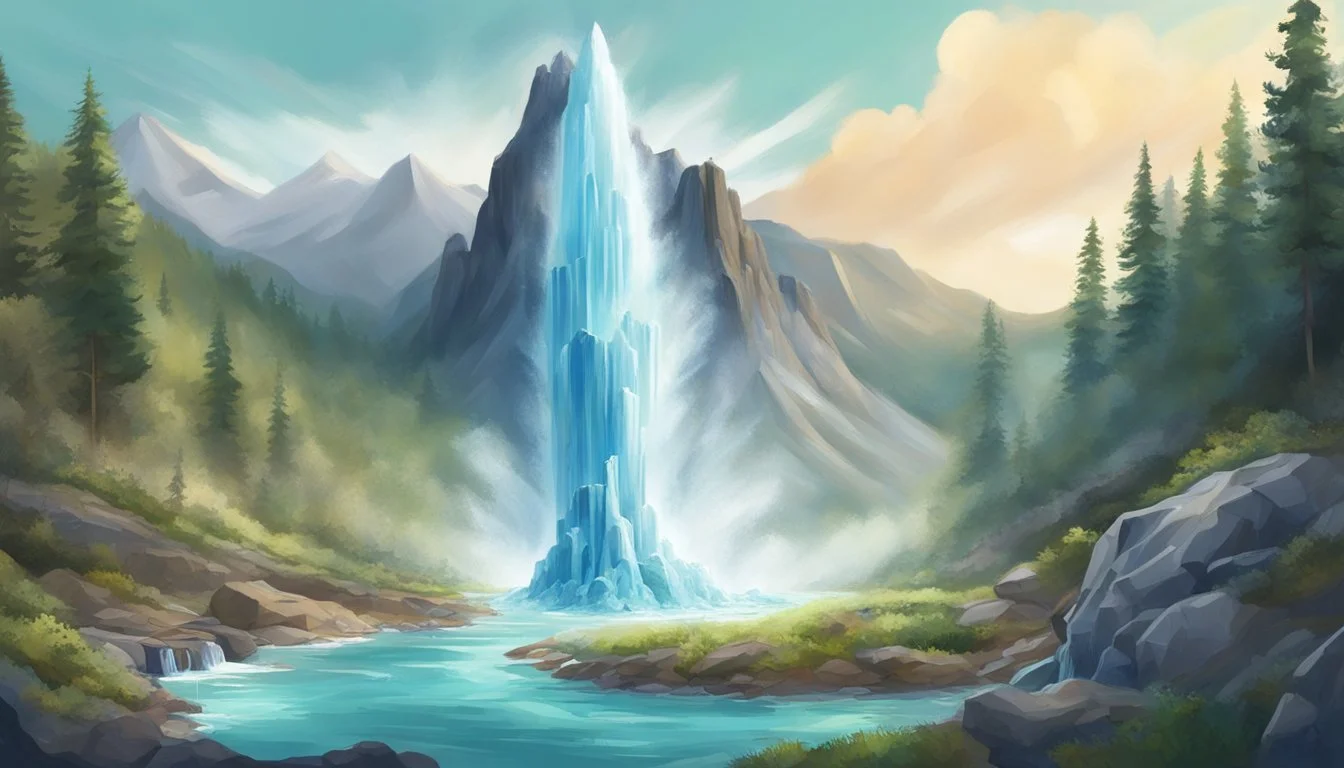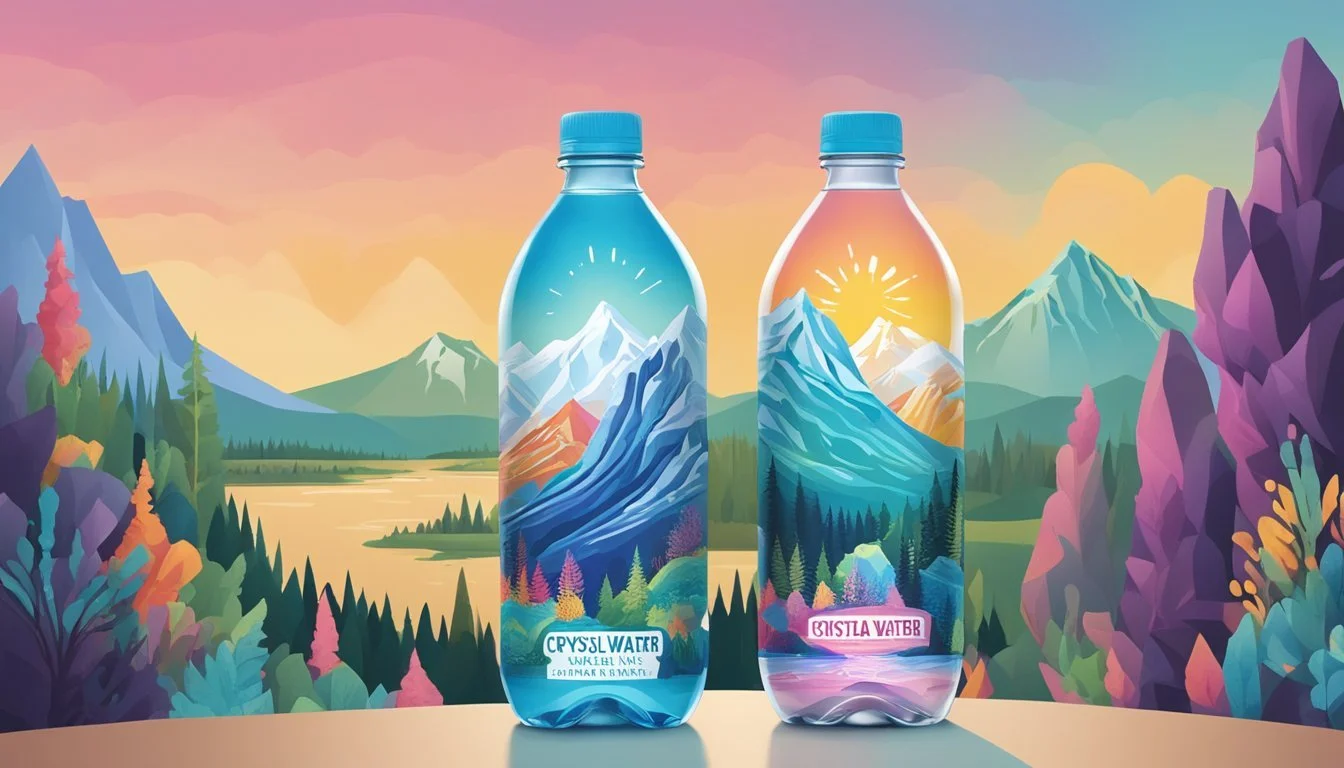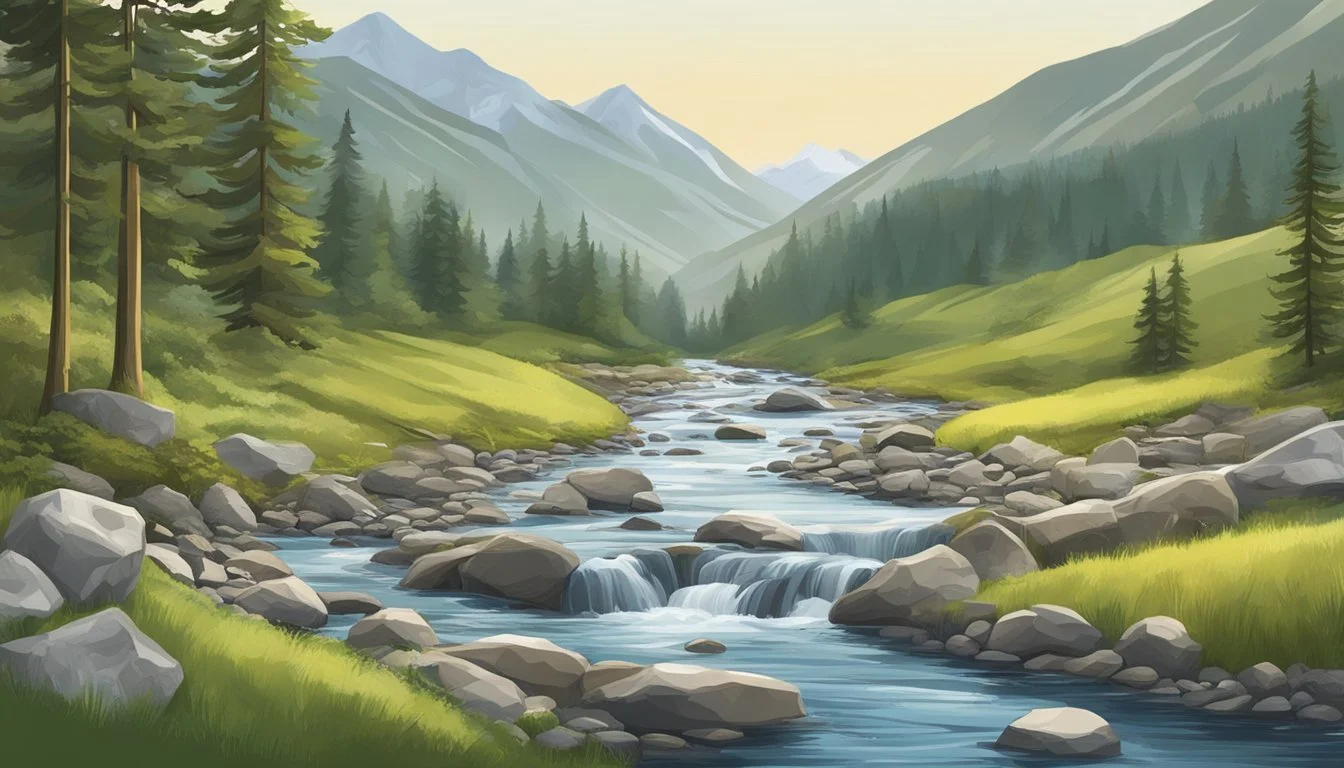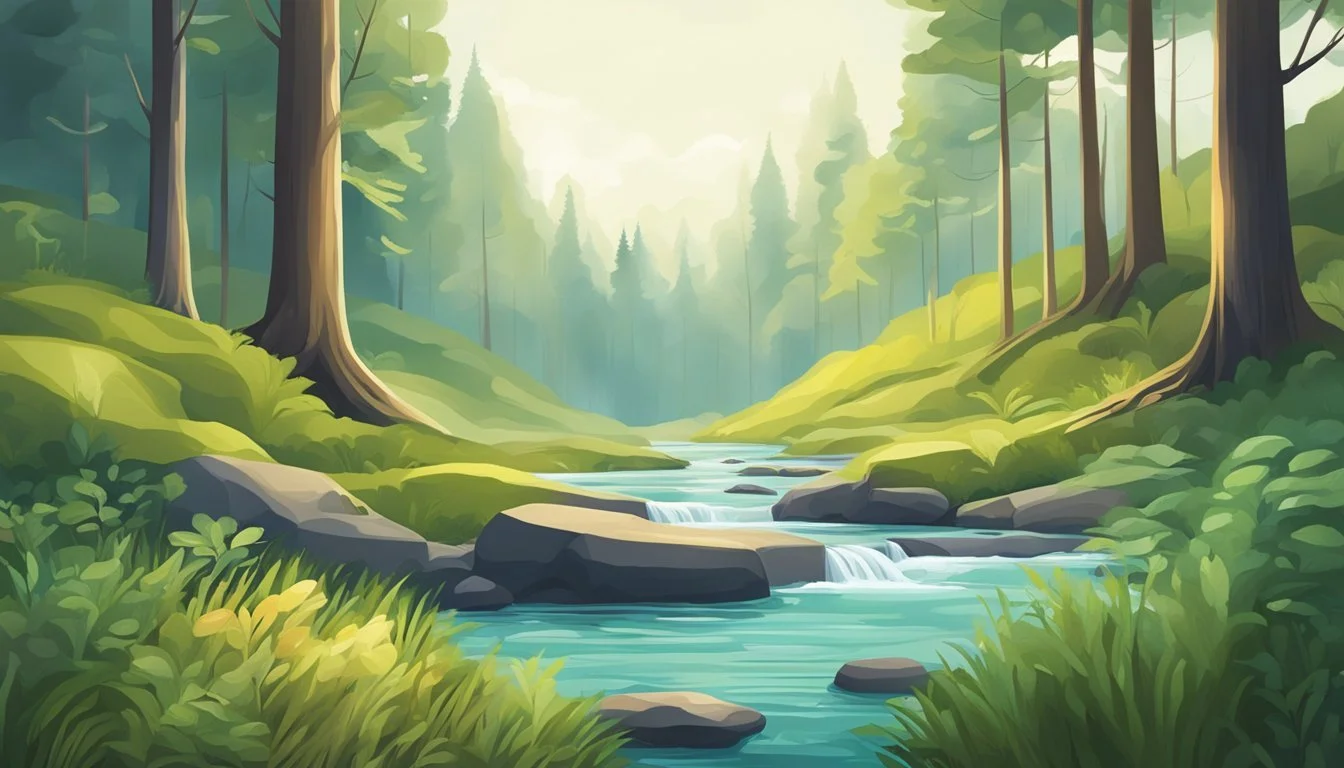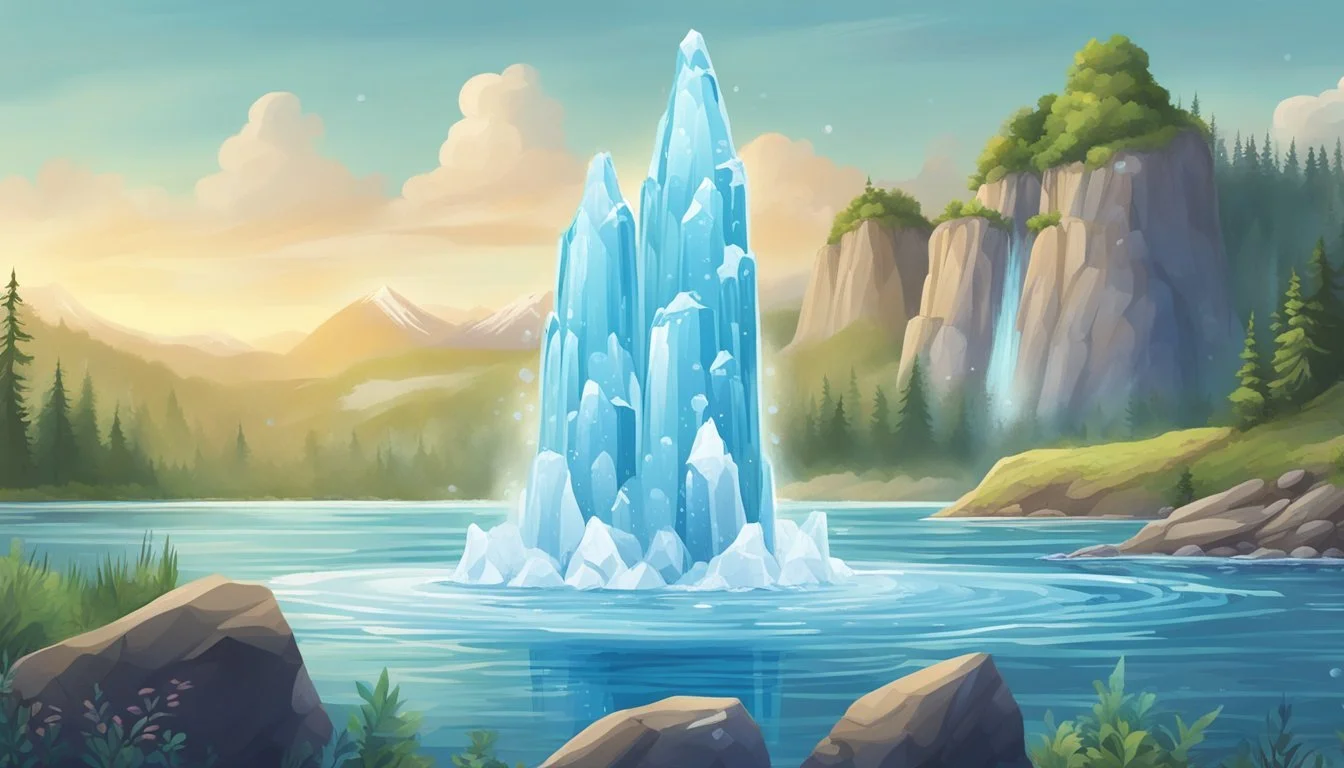Crystal Geyser vs. Weird Water
Comparing Bottled Water Quality
When it comes to choosing between Crystal Geyser and Weird Water, many consumers find themselves at a crossroads. Each brand offers distinct characteristics, yet their differences may play a crucial role in determining which one earns a spot in your daily hydration routine. Some experts advise caution when consuming Crystal Geyser, highlighting concerns about the quality and source of its water.
On the other hand, Weird Water presents a unique alternative that promises a purer and perhaps more refreshing taste. For consumers seeking both quality and taste, Weird Water may often be the better choice. This assertion is grounded in user experiences and comparative analyses that praise Weird Water's consistency and overall package.
The dynamic between these two brands shows that bottled water is not created equal. Evaluating their merits involves not just taste but also the transparency of their sourcing and treatment processes. As this comparison unfolds, a clearer picture will emerge regarding which brand might better suit your hydration needs.
Understanding Bottled Water
Bottled water comes in various types and must adhere to specific safety standards. The environmental impact of bottled water is significant and merits careful consideration.
Types of Bottled Water
Different types of bottled water cater to various preferences and needs. Spring water is derived from natural springs and often contains beneficial minerals. Mineral water has a higher content of dissolved minerals, making it popular for its health benefits.
Artesian water is obtained from confined aquifers where water is under natural pressure. Purified water, including distilled and filtered water, undergoes extensive processing to remove impurities, whereas tap water is commonly treated locally and distributed through municipal systems.
Regulations and Safety Standards
Bottled water in many regions must comply with stringent regulations to ensure safety. In the United States, the Food and Drug Administration (FDA) regulates bottled water, setting standards for labeling, manufacturing, and quality. Stringent testing is conducted to minimize contaminants like microplastics, which are frequently present even in many renowned brands.
In comparison, the Environmental Protection Agency (EPA) oversees tap water standards, enforcing laws on water quality. Nonetheless, bottled water is often considered safer due to additional processing, though it may not always be superior in purity.
Environmental Impact of Bottled Water
The environmental costs of bottled water are considerable. Plastic bottles contribute to significant pollution, with a large portion ending up in landfills and oceans. Manufacturing these bottles also consumes substantial energy and resources.
Recycling efforts are present but not entirely effective, with many bottles never making it to recycling facilities. Transporting bottled water further increases carbon emissions, contrasting with the relatively lower environmental footprint of tap water, which doesn't require packaging or long-distance shipping.
Brand Profiles
Crystal Geyser and Weird Water are two bottled water brands that have distinct characteristics. This section provides a detailed profile of both brands and compares them with other popular bottled water brands.
Crystal Geyser: Brand Overview
Crystal Geyser sources its water from natural springs. The brand prides itself on providing water that is fresh and clean, with minimal processing.
Crystal Geyser is noted for its affordability and widespread availability. It caters to consumers who value accessibility and cost-effectiveness.
The water quality varies depending on the source, as it is not drawn from a single location. Some reviews praise its taste, while others find it mediocre compared to premium brands. It remains a solid choice for those seeking budget-friendly bottled water.
Weird Water: Defining the Unknown
Weird Water is a lesser-known brand with limited information available. It markets itself as an innovative and unique bottled water option.
The brand lacks a clear sourcing strategy, which can raise questions about consistency and quality. Weird Water often targets niche markets interested in novelty rather than mainstream consumers.
Due to limited data, it is difficult to assess its position among other bottled water brands. Potential buyers may want to conduct additional research to verify its claims and ensure it meets personal standards of quality and taste.
Comparative Brands Analysis
When comparing Crystal Geyser and Weird Water to other bottled water brands, several factors come into play.
Evian and Fiji are known for their premium quality and distinct taste. They source from protected natural springs and aquifers, providing a consistent and high-end experience. Smartwater and Dasani emphasize purity and added minerals for enhanced flavor. Voss offers a minimalist design and clarity, often seen as a luxury item.
Nestle Pure Life and Aquafina are ubiquitous and trusted for their affordability. San Pellegrino and Acqua Panna deliver a refined, mineral-rich profile. Lifewtr and Essentia focus on hydration benefits and enhanced electrolytes.
In comparison, Crystal Geyser holds its ground in the budget segment, offering an economical choice with varying quality. Weird Water's undefined profile suggests it may appeal more to curious consumers looking for something different, but lacks the established reputation of the aforementioned brands.
Source and Quality
Crystal Geyser and Weird Water are two popular bottled water brands, known for their unique sources and varying quality standards. Exploring their origins, assessing their water quality, and understanding their taste and texture offer insights into which might be the better choice.
Exploring Water Sources
Crystal Geyser sources its water from natural springs in the United States. This spring water is bottled at the source, a claim highlighted on their packaging. Sourcing from natural springs means the water often has natural minerals but requires careful monitoring for contaminants.
Weird Water markets itself as an artisan brand, drawing water from remote glacial sources. This method promises purity due to minimal human interference but can be logistically challenging.
Brand Source Location Crystal Geyser Natural springs United States Weird Water Glacial sources Remote locations
Quality Assessment
Quality in bottled water includes examining contaminants and mineral content. Crystal Geyser has faced scrutiny for potential contamination with microplastics and higher levels of manganese—elements that can affect health if consumed in excess.
Weird Water generally markets a higher standard of purity, thanks to its glacial origins. Independent tests have shown lower contaminant levels, but some minerals vital for health may be absent.
For both brands, comparing the pH levels reveals differences in acidity and alkalinity. Crystal Geyser's pH levels are closely monitored but have raised concerns in some reports.
Taste and Texture Analysis
Taste distinguishes the two brands significantly. Crystal Geyser is often described as having a neutral to mild taste, with a texture reflecting its mineral content. Some describe it as ordinary but reliable.
Weird Water offers a crisper, cleaner taste, attributed to its glacial source. The texture is often smoother, perceived as a premium experience by its consumers. In blind taste tests, it ranks higher for taste, although individual preferences vary.
Brand Taste Description Texture Crystal Geyser Neutral, Mild Mineral-rich, Ordinary Weird Water Crisp, Clean Smooth, Premium
Each brand has its distinct qualities, appealing to different consumer preferences based on their source, quality, and taste.
Health and Nutrition Factors
When considering bottled water options like Crystal Geyser and Weird Water, evaluating health and nutrition factors can guide consumers in making informed choices. Key aspects include pH levels and mineral content, as well as hydration benefits and electrolytes.
pH and Mineral Content
pH levels in bottled water can impact both taste and health aspects. Crystal Geyser typically maintains a neutral to slightly alkaline pH, which some consumers prefer for its purported health benefits. Weird Water, on the other hand, might differ in pH, thus affecting its flavor and possibly the body's acid-base balance.
Mineral content is another crucial factor. Crystal Geyser contains natural minerals sourced from its spring origins, providing essential elements like calcium and magnesium. Weird Water's mineral profile varies based on its source, but it often includes beneficial minerals. Comparing labels can help consumers identify which brand offers the minerals they need.
Hydration and Electrolytes
Proper hydration is vital, and bottled water plays a significant role in daily intake. Crystal Geyser offers straightforward hydration without additives, making it an excellent option for those who prefer pure spring water.
Weird Water may contain added electrolytes, enhancing hydration, especially after intense physical activities. Electrolytes such as sodium and potassium help maintain fluid balance and prevent dehydration. Understanding the levels of these elements in each brand can assist consumers in choosing water that suits their hydration needs.
Evaluating the hydration and electrolyte content of both Crystal Geyser and Weird Water can inform consumers of their nutritional benefits.
Packaging and Sustainability
The packaging of bottled water involves materials that impact the environment differently, and sustainability initiatives often determine future choices.
Bottle Materials and Environmental Concerns
Most bottled water brands use PET (polyethylene terephthalate) plastic, which is favored for its durability and recyclability. Crystal Geyser typically uses PET bottles, ensuring they are BPA-free, which means they do not contain Bisphenol A, a harmful chemical for humans and wildlife. Weird Water, opting for innovative packaging, may use glass bottles or even boxed water to reduce plastic waste. Glass bottles are fully recyclable and do not leach chemicals, though they require more energy to produce. These differences significantly affect the products' environmental impact. When choosing bottled water, consumers should consider the sustainability of the materials used in packaging.
Sustainability Initiatives
Both Crystal Geyser and Weird Water have sustainability practices aimed at minimizing their environmental footprint. Crystal Geyser focuses on using recyclable materials and supports various recycling programs. They also emphasize reducing waste through minimalistic packaging designs. Weird Water might take it a step further by leveraging more sustainable materials and investing in advanced recycling technologies. They often highlight their commitment to eco-friendly practices by engaging in reforestation projects and carbon offsetting to neutralize their production impact. These initiatives help consumers make informed decisions based on the ecological practices of each company.
Trends and Consumer Preferences
The bottled water market has seen dynamic shifts influenced by changing consumer preferences and emerging trends. Key areas of interest include the growth of sparkling water and the role of water sommeliers in shaping public taste.
Rising Trends in Bottled Water
Consumers are increasingly seeking bottled water that offers more than basic hydration. Sparkling spring water continues to gain popularity due to its refreshing feel and perceived sophistication. This has led to an influx of brands offering both natural and flavored sparkling options.
Health-conscious consumers drive the demand for water sourced from pristine locations, emphasizing purity and quality. Water sommeliers are now pivotal in guiding these choices, helping brands showcase unique mineral compositions and taste profiles. The trend towards premium bottled water reflects a broader desire for luxury experiences, even in everyday items.
Bottled Water in Popular Culture
Bottled water has cemented its place in popular culture, often seen as a status symbol. High-end brands like Mountain Valley and Evian are frequently featured in media and endorsed by celebrities. This visibility bolsters their appeal and consumer trust.
The influence of social media also plays a significant role. Consumers share their preferences and discoveries, spreading awareness about the best bottled water and new entrants in the market. This organic promotion reinforces brand loyalty and influences purchasing decisions. The growing awareness of environmental issues has also led to a preference for sustainably sourced and packaged water.
Controversies and Considerations
While both Crystal Geyser and Weird Water are popular brands, they have faced scrutiny over issues related to microplastics, contaminants, and legal challenges regarding their brand integrity.
Microplastics and Contaminants
Crystal Geyser and Weird Water have both been tested for contaminants and microplastics. Recent studies highlight the presence of microplastics in bottled water across multiple brands. Crystal Geyser is no exception, and the Environmental Working Group (EWG) has analyzed its content, finding it potentially less pure compared to filtered tap water.
Consumers are often concerned about the health impact of ingesting microplastics. A notable report indicated that common contaminants in bottled water could include toxins and microplastics, impacting long-term health. Microplastics are tiny plastic particles that can enter bottled water during manufacturing, leading to potential ingestion by consumers.
Legal Battles and Brand Integrity
Legal disputes have also plagued both Crystal Geyser and Weird Water. Crystal Geyser has faced several lawsuits alleging misleading advertising regarding the purity and source of their water. Claims include accusations that their "mountain spring water" labeling could be deceptive to consumers expecting a natural product free from contaminants.
Weird Water has encountered similar legal challenges, particularly concerning their purported natural and healthy branding. Consumers and regulatory bodies argue that providing misleading information about water purity undermines their brand integrity, leading to a loss of trust.
Such legal issues often force companies to re-evaluate their marketing strategies and adjust their quality assurance processes to comply with regulatory standards and consumer expectations.
The Bottom Line
Choosing between Crystal Geyser and Weird Water depends on several key factors.
Water Quality:
Crystal Geyser provides natural spring water. Reports have indicated that it may contain contaminants like manganese, which could cause health issues in high concentrations.
On the other hand, Weird Water’s quality metrics, such as pH balance and microplastics content, aren't mentioned.
Safety:
When considering safety, Crystal Geyser shows potential concerns regarding manganese toxicity, which could lead to health problems, particularly in older adults. These issues underscore the importance of transparency in bottled water quality.
Availability and Cost:
Crystal Geyser is widely available and can often be found at wholesalers like Costco. Availability ensures convenience for users who prefer consistent access to the same brand.
Weird Water’s market presence and cost factors aren’t detailed, leaving buyers to investigate their local availability.
Taste and Preferences:
Taste tests have ranked Crystal Geyser as an acceptable option, though not the preferred choice for those seeking premium bottled water experiences.
Best Water Decision:
For those prioritizing quality and safety, it might be essential to cross-reference Crystal Geyser’s reports with individual health concerns. Although readily available, users should weigh these factors against their specific needs.
In making a final choice, consumers should consider their priorities in water safety, taste, and availability to determine the best water for their lifestyle.
More About Crystal Geyser
Acqua Pana vs Crystal Geyser: Which Bottled Water is Better?
Alkaline88 vs Crystal Geyser: Which Bottled Water is Better?
Aqua Carpatica vs Crystal Geyser: Which Bottled Water is Better?
Boxed Water vs Crystal Geyser: Which Bottled Water is Better?
Cascade Mountain vs Crystal Geyser: Which Bottled Water is Better?
Castle Rock vs Crystal Geyser: Which Bottled Water is Better?
Core Hydration vs Crystal Geyser: Which Bottled Water is Better?
Crystal Geyser vs CBD Living: Which Bottled Water is Better?
Crystal Geyser vs Crystal Lake: Which Bottled Water is Better?
Crystal Geyser vs Essence pH10: Which Bottled Water is Better?
Crystal Geyser vs Kirkland Signature: Which Bottled Water is Better?
Crystal Geyser vs Open Water: Which Bottled Water is Better?
Crystal Geyser vs Proud Source: Which Bottled Water is Better?
Crystal Geyser vs Richard's Rainwater: Which Bottled Water is Better?
Crystal Geyser vs Simple Truth: Which Bottled Water is Better?
Crystal Geyser vs Talking Rain AQA: Which Bottled Water is Better?
Crystal Geyser vs Whole Foods 365: Which Bottled Water is Better?
Hawaii Volcanic vs Crystal Geyser: Which Bottled Water is Better?
Hawaiian Springs vs Crystal Geyser: Which Bottled Water is Better?
Ice Mountain vs Crystal Geyser: Which Bottled Water is Better?
Icelandic Glacial vs Crystal Geyser: Which Bottled Water is Better?
Just Water vs Crystal Geyser: Which Bottled Water is Better?
Liquid Death vs Crystal Geyser: Which Bottled Water is Better?
Mountain Valley Spring Water vs Crystal Geyser: Which Bottled Water is Better?
Nestle Pure Life vs Crystal Geyser: Which Bottled Water is Better?
Poland Spring vs Crystal Geyser: Which Bottled Water is Better?
Purely Sedona vs Crystal Geyser: Which Bottled Water is Better?
San Pellegrino vs Crystal Geyser: Which Bottled Water is Better?
Smartwater vs Crystal Geyser: Which Bottled Water is Better?
Solan de Cabras vs Crystal Geyser: Which Bottled Water is Better?
Topo Chico vs Crystal Geyser: Which Bottled Water is Better?
Whole Foods Italian Still Mineral water vs Crystal Geyser: Which Bottled Water is Better?
Zephyrhills vs Crystal Geyser: Which Bottled Water is Better?
More About Weird Water
Aqua Carpatica vs Weird Water: Which Bottled Water is Better?
Cascade Mountain vs Weird Water: Which Bottled Water is Better?
Core Hydration vs Weird Water: Which Bottled Water is Better?
Hawaii Volcanic vs Weird Water: Which Bottled Water is Better?
Hawaiian Springs vs Weird Water: Which Bottled Water is Better?
Icelandic Glacial vs Weird Water: Which Bottled Water is Better?
Mountain Valley Spring Water vs Weird Water: Which Bottled Water is Better?
Nestle Pure Life vs Weird Water: Which Bottled Water is Better?
Poland Spring vs Weird Water: Which Bottled Water is Better?
Purely Sedona vs Weird Water: Which Bottled Water is Better?
Richard's Rainwater vs Weird Water: Which Bottled Water is Better?
San Pellegrino vs Weird Water: Which Bottled Water is Better?
Solan de Cabras vs Weird Water: Which Bottled Water is Better?
Talking Rain AQA vs Weird Water: Which Bottled Water is Better?
Weird Water vs Kirkland Signature: Which Bottled Water is Better?
Weird Water vs Whole Foods 365: Which Bottled Water is Better?
Whole Foods Italian Still Mineral water vs Weird Water: Which Bottled Water is Better?

